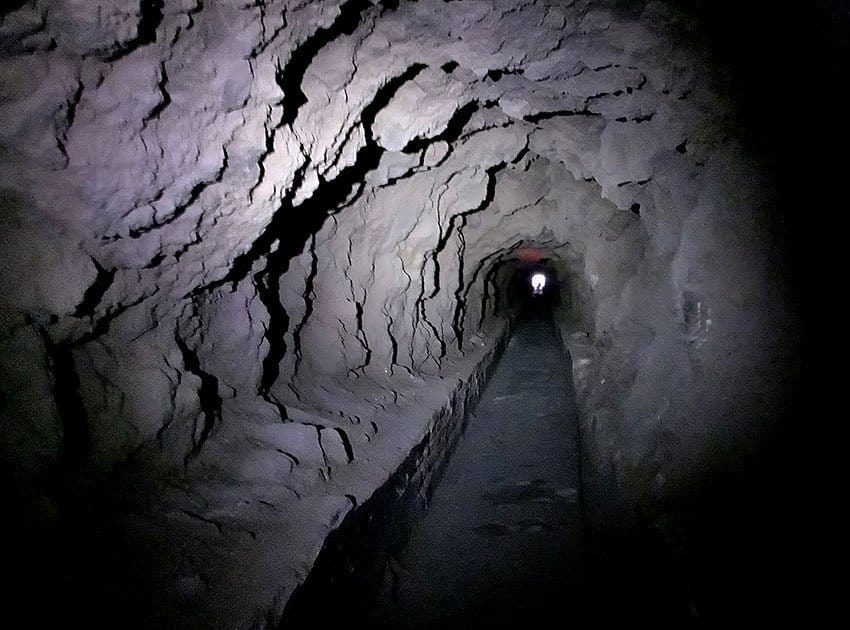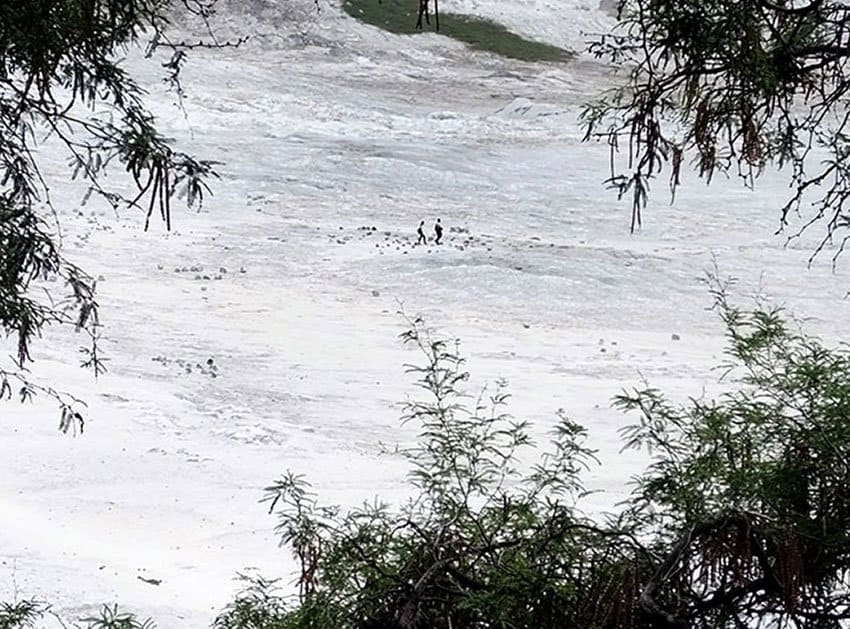Valle de Santiago is a small town in the state of Guanajuato, located 240 kilometers northwest of Mexico City. But “Valle de la Luna” might be a better name for it because it is surrounded by at least a dozen very impressive volcanic craters.
Without a doubt, the most extraordinary of these is La Hoya del Rincón de Parangueo, which can be accessed via a 400-meter-long tunnel through the crater wall, a tunnel for pedestrians only, I might add. Google Maps did a good job of guiding me from Guadalajara to Valle de Santiago and from there I used what I call “Mexnet” to get me to the tunnel entrance.
Mexnet is the good old traditional approach to finding your way around Mexico, used by just about everyone — for thousands of years, I am sure. I activated this wonderful navigational system simply by rolling down the window, and asking “¿Por favor, donde está el cráter?” (Where is the crater, please?) every two blocks.
Without even touching my so-called smartphone, I soon ended up in front of the tunnel entrance, where two young boys offered to illuminate me and my friends with a) a bright flashlight and b) their historical knowledge of the place. As we plunged into the darkness, the smaller guide began: “Había una vez un Gachupín . . .” (Once upon a time there was a despicable Spaniard . . .)
After a few minutes I stopped the little boy to ask a question. Instead of answering, he looked at me with astonishment and confusion. I tried rephrasing my question, but still my little Cicerone remained tongue-tied and wide-eyed.

“John,” whispered my friend Rodrigo in English, “he has the whole thing memorized and you’ve just interrupted him. He can’t continue because he doesn’t really understand everything he’s saying.”
The boy looked relieved when I said I’d like him to start all over from the very beginning, so I could record his talk. “And I promise not to interrupt even once.”
He blinked and restarted his torrent of words with hardly a waiver. It was a real pleasure to watch oral tradition in the making! Here’s the story as I understood it from the lips of my young guide:
“Once upon a time there was a Spaniard named Don Manuel Gutiérrez living here with much land and wealth. However, he did not have enough water to irrigate his fields. So he hired a man he trusted and had him fill two jugs with the water from the crater lake to get it analyzed. This campesino took the samples and started off for Mexico City.
“On his way he came to a cantina, inside of which his three best friends were drinking. Later, well lubricated, the campesino stumbled out of the bar and very soon broke the two jars. So the next morning he explained to his friends what had happened.
“Don’t worry,” said one of them, “we will find you more water from around here.” So he took the water to Mexico City and they said it would be fine for agriculture because what they had analyzed was simply rainwater.

“Don Manuel then approached local officials about digging the tunnel. He got permission and hired 16 Guanajuato miners who began digging the tunnel from both ends simultaneously, with nothing more than picks and shovels.
“They started the tunnel in 1910 and finished it in 1915. Five years it took! Then the owner bought a very expensive pump and started irrigating his fields with the crater water. But unfortunately, this water [which was extremely alkaline with a pH of more than 10] killed all his crops. So the Spaniard arranged to meet the man who had taken the water for testing, supposedly to reward him, but actually to kill him.
“There were six soldiers hiding in the tunnel, two at each end and two in the middle. The campesino made it halfway through the tunnel where they murdered him and, it is said, buried him. And his body remains there to this day.”
If the story of the tunnel was so filled with drama and passion, I wondered what we would find in the crater — and I was not disappointed.
You have to catch your breath when you first step out of the tunnel and into this crater, which is enormous, and shimmering white. If you are from colder climates, your eye sees ice and snow although the temperature is warm and pleasant. Start climbing down through deep white fissures into the old lake bed and I guarantee you will feel like you are walking on another planet.
According to Conabio, the Mexican Biodiversity Commission, the powdery white surface in this crater is some kind of soda, clearly containing at least some sodium bicarbonate. Put a little vinegar on it and watch it fizz. Before the 1980s this was a big lake, but excessive pumping of groundwater in the area caused all the local crater lakes to drain, turning each one into a little desert.
[soliloquy id="65960"]
Technically speaking what we found ourselves in is called a maar volcano, meaning it was formed by a violent explosion when water worked its way deep underground and came into contact with magma.
This crater lake is about a kilometer wide. We hiked across it and were surprised to find what appear to be stromatolites, the oldest fossils in the world, which are composed of a mix of sediments plus cyanobacteria, also called spirulina, the first living thing on earth and a superfood much appreciated by the Aztecs.
Apparently, spirulina was happily propagating in this lake right up to 1998. At the far end of the crater we found another surprise: thousands of naturally formed stone balls, about the size of tennis balls. At first, I thought they were spherulites, which are volcanic in origin and often associated with obsidian, but my geologist friends say no, these are something else — but up to now they have still not come up with an explanation for what they really are.
It is claimed that this crater is one of “Las Siete Luminarias,” seven craters supposedly lying in the same configuration as the stars of the Big Dipper. It is also claimed that this is the birthplace of the Aztecs, the center of the world, and a great place to see UFOs. Even the Loch Ness monster has been spotted here, somebody said.
Well, I can only tell you what I saw and that was a crater: but what a crater! It was certainly well worth the trip. If you go to visit this place, I recommend you hike all the way across the lake and return around the perimeter. This otherworldly landscape has different characteristics in different parts of the crater. If you can manage to go on a weekday, you may have the whole place to yourself. Well, not quite. It will be just you and, of course the Loch Ness monster!
You should have no problem reaching the tunnel entrance if you tell Google Maps to take you to Túnel al Crater el Rincón de Parangueo.
And, of course, you always have Mexnet to fall back on. Driving time from Mexico City is about four hours and from Guadalajara about three.
The writer has lived near Guadalajara, Jalisco, for more than 30 years and is the author of A Guide to West Mexico’s Guachimontones and Surrounding Area and co-author of Outdoors in Western Mexico. More of his writing can be found on his website.
